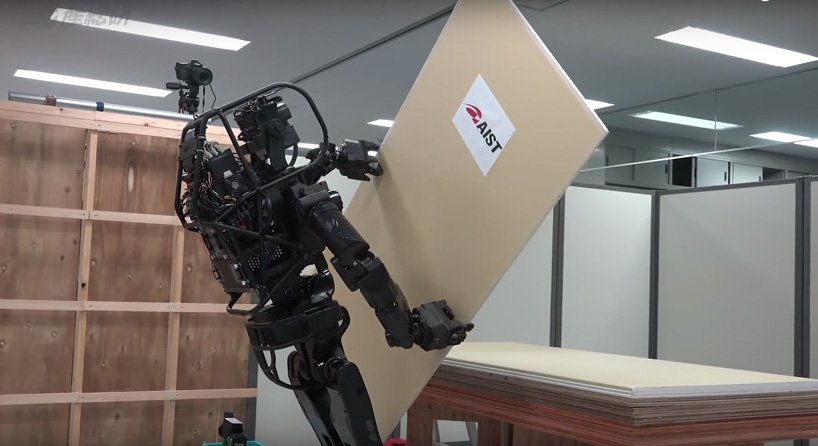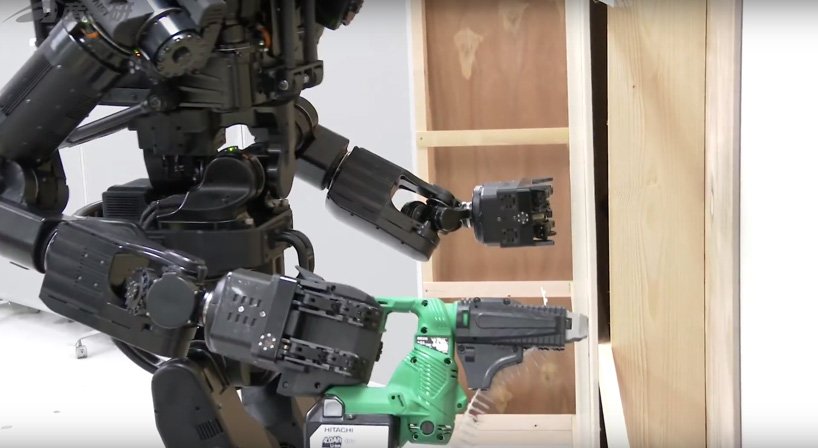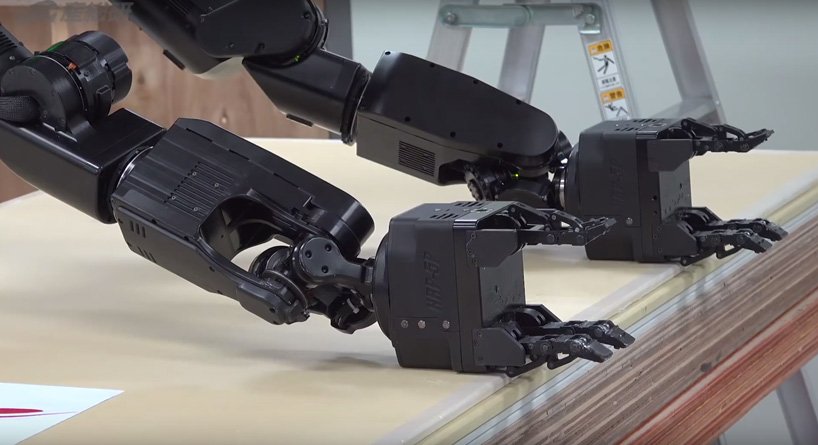It’s quite fascinating to watch the Japanese humanoid robot HRP-5P installing drywall. Granted, it has the skills of an amateur working at Habitat for Humanity, but the robot’s sophisticated movements are totally worth the awe.
Japan’s AIST (National Institute of Advanced Industrial Science and Technology) has developed the HRP-5P robot to perform simple but heavy-duty construction tasks. The humanoid robot was developed in response to the country’s changing demographics. With an aging population and a continuously decreasing birthrate, the humanoid robot will be helpful in bridging the gap created by the shortage of labor. This development is part of Japan’s familiar pattern—to address its population shortage through technology.

HRP-5P Robotic Construction Worker. Image Courtesy of Japan Advanced IST Institute
Read more:
Robot Smoothly Cuts Free-Forms out of Marble – Watch Video
The Humanoid Robot is The Future in The Construction Industry:

Image Courtesy of Japan Advanced IST Institute
HRP-5P is designed to replace heavy-duty human labor in the construction industry. It can carry out different building tasks at once, like picking up plasterboard and screwing it to the wall. AIST has developed it in the hope that the shrinking working population could focus, instead, on less dangerous work.
At a height of 182 centimeters and a weight of 101 kilograms, HPR-5P has 37 degrees of freedom, distributed as follows: 2 degrees freedom of the neck, 3 degrees of freedom of the waist, 8 degrees freedom of each arm, 2 degrees of freedom of each hand, and 6 degrees of freedom of each leg. This freedom of movement lets it move in angles and degrees beyond the capabilities of humans. Hence, it allows it to be flexible enough to lift and fix drywall, for example.

Image Courtesy of Japan Advanced IST Institute
The Humanoid robot is not fast but is extremely methodical. What it lacks in speed, it makes up for in its caution and meticulousness. It is also equipped with object recognition technology and the ability to measure environmental conditions. Its robust body makes it perfect for the construction of buildings and large structures, like aircraft and ships. The robot is structured to carry large and heavy objects with both its arms. For example, it can carry gypsum boards, measuring 1820 x 910 x 10 millimeters and weighing 11 kilograms, or plywood boards, measuring 1800 x 900x 12 mm and weighing 13 kilograms.
If everything goes according to AIST’s plan, heavy-duty human labor in the construction industry will be a thing of the past. Someday in the future, all the drywall in Japan will be handled by the HRP-5P.

